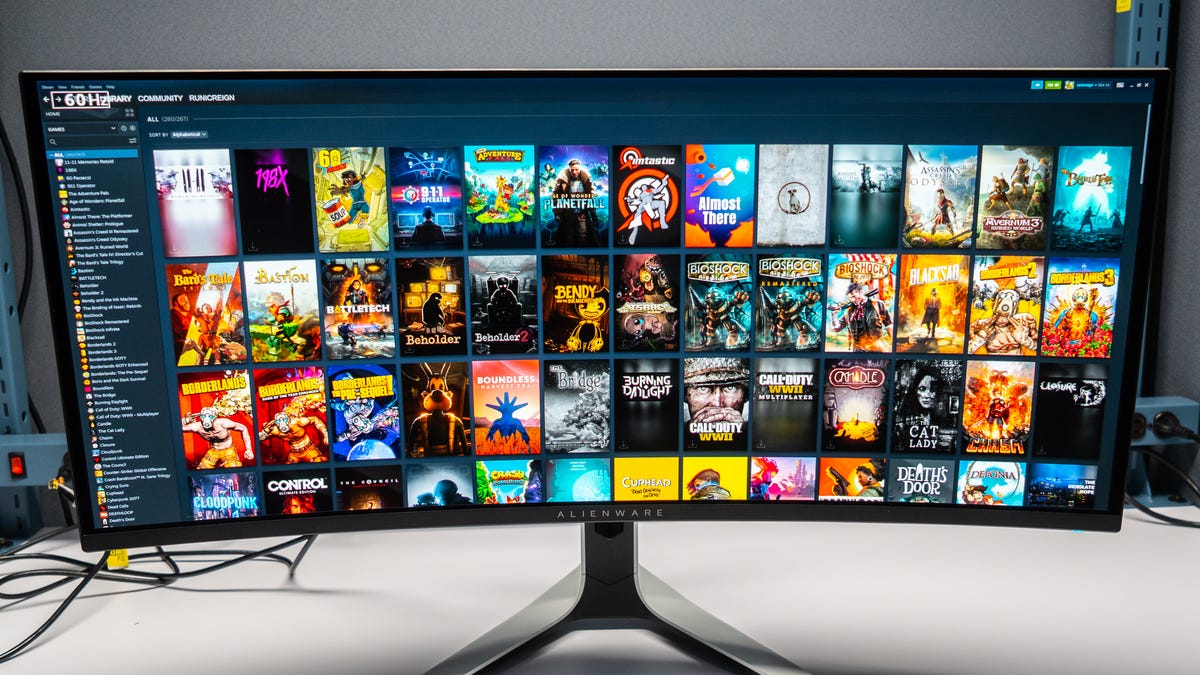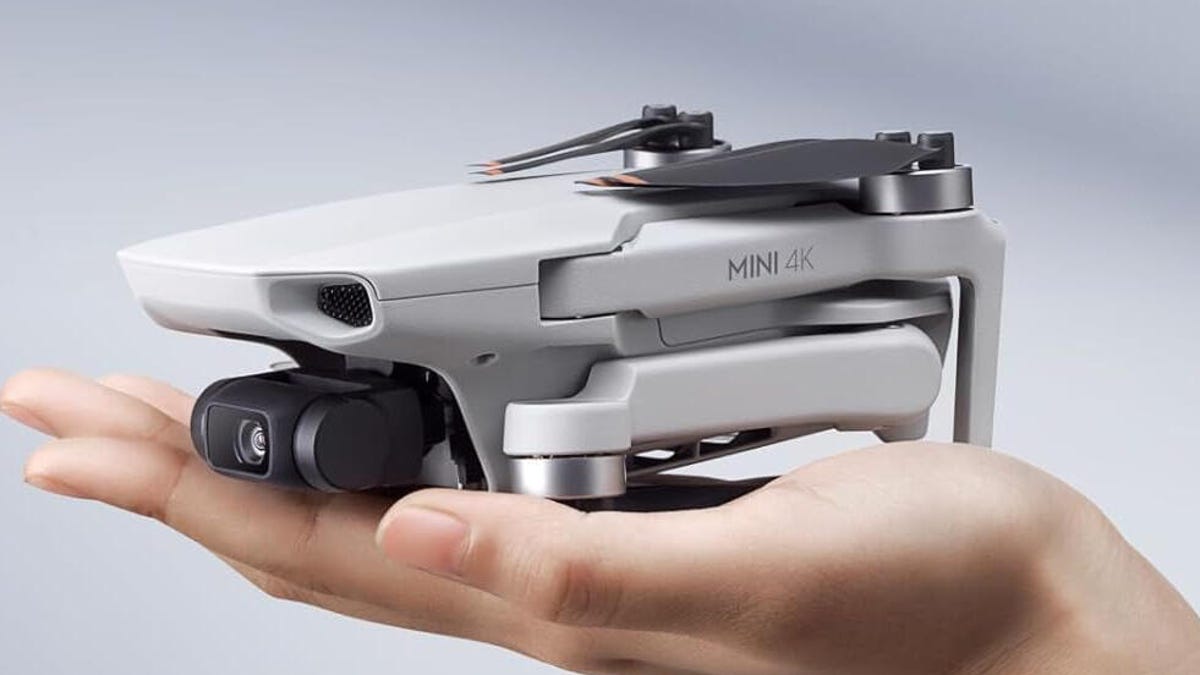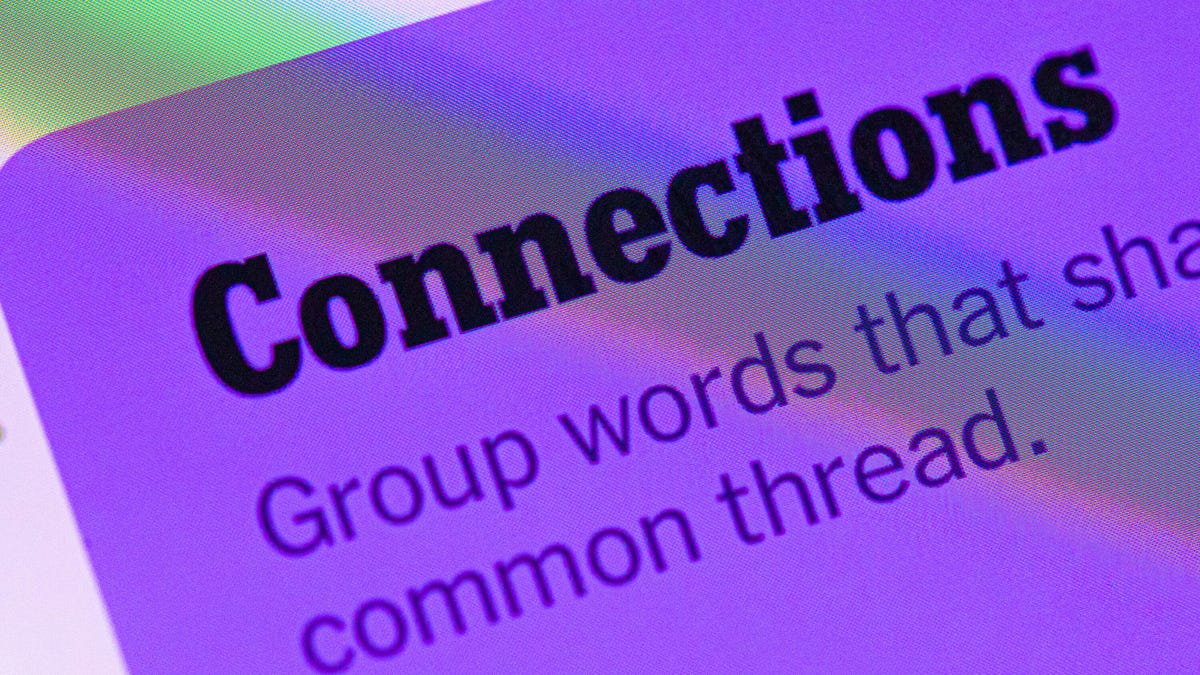Technologies
How CNET Tests Monitors
The method behind our monitor-review madness.

Monitor testing and evaluation consists of formal and subjective quality tests and hands-on assessment of the display’s design and features — connection selection and location, menus and options and overall behavior. As part of the process we use the monitor for tasks specific to its mission, such as everyday productivity, video streaming, image and video editing or different types of gaming (such as FPS or RPG). Note that we only report a fraction of our results, usually what’s necessary to adequately convey a monitor’s strengths and weaknesses for particular uses.
The process begins with unboxing and setup; it’s connected to our Windows-based desktop testbed (or a relatively high-end Mac in cases that require it) equipped with a current-generation Intel Core i9 and high-end Nvidia GeForce graphics card. Both the computer and monitor are plugged directly into a wall outlet to prevent any power issues that might impact performance.
We generally prefer to use our cables rather than the manufacturer-supplied ones since they’re a known quantity and tend to be higher quality; if we run into any issues, we double check using the manufacturer’s cables. DisplayPort is our primary connection for testing. If the monitor specifies any console-specific capabilities, we connect it to the relevant console(s), Xbox Series X and/or PS5 via HDMI.
Before any testing begins, we photograph the default settings and all menu options for reference and to determine the complete set of tests we’ll need to run on that particular monitor given its specific capabilities; how extensively we test depends on the capabilities of the monitor, the screen and backlight technology used, and the judgment of the reviewer. We disable power-saving measures where relevant, which can affect brightness and related measures (the option is mandatory per California law). We use a subset of these tests to evaluation laptop displays and run them both plugged into a wall outlet and on battery using the default profile but with screen timeouts disabled.
We also record any relevant information about the panel — manufacturer specs for resolution, color gamut and profiles, refresh rates and so on — that may impact our evaluation against manufacturer’s claims. While we review a display with the company’s publicly expressed target market in mind, we also consider the monitor’s suitability for other uses that might apply.Wherever possible, we download drivers and color profiles specific to the monitor.
What we measure
All measurements are performed using the most recent version of Portrait Display’s Calman Ultimate software using an X-Rite i1Display Pro Plus (rebranded as Calibrite ColorChecker Display Plus) and a variety of included patch sets, with additional HDR testing using a Murideo Six-G pattern generator and or the Client3 HDR patterns within Calman. We periodically spot check the colorimeter’s accuracy against the Konica Minolta CS-2000 spectroradiometer used for our TV testing.
Our test lab is equipped with blackout curtains to fully block ambient light, though complete darkness isn’t essential since the colorimeter sits directly on the screen and isn’t affected by dim lighting. The room has natural light and various artificial sources for normal usage evaluation.
Color accuracy results are reported in units of Delta E 2000. We perform most of the tests (where we know results vary) at both 100% and default hardware brightness levels.
Core tests — those we run on every display, regardless of intent or price — include:
- White point, brightness (peak and minimum), contrast and gamma for sRGB and the native color space measured across 21 gray patches (0-100%), reported rounded down to the nearest 50K as long as there are no big variations. A variation of plus or minus 200K around the target color temperature is considered acceptable for all but the most color-critical displays.
- Color gamut coverage and accuracy for sRGB and the native color space using Calman’s standard Pantone patch set plus grayscale and skin tone patches.
- We add Blur Busters‘ motion tests for gaming monitors to judge motion artifacts (such as ghosting) or refresh rate-related problems.
If a monitor has menu options beyond the basics, we run the same core tests for the following settings when available:
- All color presets
- All gaming presets (such as FPS). We also test brightness for pixel overdrive and motion-blur reduction modes (which tend to lower brightness considerably).
- Gamma for at least 1.8, 2.2 and 2.6
- Color temperatures for at least 5000K, 6300K, 6500K and 9300K
For HDR, we add testing for HDR-specific presets (such as Game HDR or Cinema HDR) and brightness for window sizes of 1%, 5%, 10% and 100% of the screen.
Finally, there are tests we only run when needed to understand the measurements we’ve gotten or to confirm that artifacts we’re seeing — notably nonuniformity — aren’t imaginary.
Technologies
What a Ban Would Actually Mean for DJI Drone Owners and Holiday Shoppers
What’s the secret to a very un-merry shopping season? A brand new, unusable drone.

With Thanksgiving wrapped up and the Black Friday shopping sales here, if a DJI drone is on your holiday wish list, you might want to hit «buy» immediately. The company has issued a stark warning: Its drones could be banned from sale in the US, and the deadline is looming.
The Federal Communications Commission voted 3-0 at the end of October to «close loopholes» that allow tech deemed a «national security risk» to be sold in the US. In plain English, the US government is clearing the path to give DJI the same treatment it gave Chinese phone-maker Huawei, effectively banning its products from the American market.
The US government has deemed DJI, which is based in China, a security risk. It’s also considering a separate ban on TP-Link routers.
DJI is already sounding the alarm, posting on Instagram that a «deadline that could decide DJI’s fate in the US is just 43 days away» (now 19 days away). The company is warning that without an audit, its products could face an «automatic ban.» The US government has long labeled the Chinese drone maker a security risk, and it looks like the hammer might finally be coming down right before the holidays.
Don’t miss any of our unbiased tech content and lab-based reviews. Add CNET as a preferred Google source.
The vote isn’t the end of the road, however. Future bans would need to target specific products and would require a period of public consultation. But it appears the groundwork is being set for the FCC to block sales of future and some existing DJI drones from US shores, as well as products that use DJI technology.
The government has called for a DJI audit by the end of the year, but if that doesn’t happen, DJI drone products could be banned for sale by default under a national security law.
DJI asks for a security audit before any ban
A representative for DJI told CNET that while the FCC vote references a rule change that doesn’t currently apply to DJI specifically, the National Defense Authorization Act deadline in December would put Chinese companies like it on the FCC’s ban list, «without any evidence of wrongdoing or the right to appeal.»
Adam Welsh, head of global policy at DJI, said the company has repeatedly said it would be open to audit, but that «more than 10 months have now passed with no sign that the process has begun.»
«The US government has every right to strengthen national security measures, but this must go hand in hand with due process, fairness, and transparency,» Welsh said.
Welsh said DJI is urging the government to start the audit process or grant an extension.
Will DJI drone owners need to give them up?
Because the ban would apply to new sales, not drones that have already been sold, a DJI drone you already own would still be legal to use — at least under current rules.
Government agencies, however, are prohibited from purchasing or using drones from Chinese companies, including DJI.
DJI’s drones consistently rank high in their product category. In January, they dominated CNET’s list of best drones for 2025. But some of the company’s newest products, such as the DJI Mavic 4 Pro, haven’t been available for sale in the United States.
Even DJI products that are not yet banned may be hard to find. The website UAV Coach has posted a guide to the bans and reports that, due to inventory issues, most DJI drone models are sold out at retailers regardless of future FCC action.
Technologies
Today’s NYT Strands Hints, Answers and Help for Nov. 29 #636
Here are hints and answers for the NYT Strands puzzle for Nov. 29, No. 636.

Looking for the most recent Strands answer? Click here for our daily Strands hints, as well as our daily answers and hints for The New York Times Mini Crossword, Wordle, Connections and Connections: Sports Edition puzzles.
Today’s NYT Strands puzzle is a real puzzler. Some of the answers are difficult to unscramble, so if you need hints and answers, read on.
I go into depth about the rules for Strands in this story.
If you’re looking for today’s Wordle, Connections and Mini Crossword answers, you can visit CNET’s NYT puzzle hints page.
Read more: NYT Connections Turns 1: These Are the 5 Toughest Puzzles So Far
Hint for today’s Strands puzzle
Today’s Strands theme is: What a piece of work!
If that doesn’t help you, here’s a clue: You can build it in a shop.
Clue words to unlock in-game hints
Your goal is to find hidden words that fit the puzzle’s theme. If you’re stuck, find any words you can. Every time you find three words of four letters or more, Strands will reveal one of the theme words. These are the words I used to get those hints but any words of four or more letters that you find will work:
- CREW, REAM, LANE, WHEE, DELL, CANE, PULL, REVEL
Answers for today’s Strands puzzle
These are the answers that tie into the theme. The goal of the puzzle is to find them all, including the spangram, a theme word that reaches from one side of the puzzle to the other. When you have all of them (I originally thought there were always eight but learned that the number can vary), every letter on the board will be used. Here are the nonspangram answers:
- WHEEL, AXLE, LEVER, WEDGE, PLANE, PULLEY, SCREW
Today’s Strands spangram
Today’s Strands spangram is SIMPLEMACHINE. To find it, start with the S that’s three letters to the right on the top row, and wind over and down.
Technologies
Today’s NYT Connections Hints, Answers and Help for Nov. 29, #902
Here are some hints and the answers for the NYT Connections puzzle for Nov. 29, #902.

Looking for the most recent Connections answers? Click here for today’s Connections hints, as well as our daily answers and hints for The New York Times Mini Crossword, Wordle, Connections: Sports Edition and Strands puzzles.
Today’s NYT Connections puzzle is tough. If you need help sorting them into groups, you’re in the right place. Read on for clues and today’s Connections answers.
The Times now has a Connections Bot, like the one for Wordle. Go there after you play to receive a numeric score and to have the program analyze your answers. Players who are registered with the Times Games section can now nerd out by following their progress, including the number of puzzles completed, win rate, number of times they nabbed a perfect score and their win streak.
Read more: Hints, Tips and Strategies to Help You Win at NYT Connections Every Time
Hints for today’s Connections groups
Here are four hints for the groupings in today’s Connections puzzle, ranked from the easiest yellow group to the tough (and sometimes bizarre) purple group.
Yellow group hint: Middle of the body.
Green group hint: Fill-in.
Blue group hint: Nice place to hang out.
Purple group hint: Card game.
Answers for today’s Connections groups
Yellow group: Abdominal area.
Green group: Replacement.
Blue group: Park staples.
Purple group: Blackjack terms.
Read more: Wordle Cheat Sheet: Here Are the Most Popular Letters Used in English Words
What are today’s Connections answers?
The yellow words in today’s Connections
The theme is abdominal area. The four answers are core, midsection, torso and trunk.
The green words in today’s Connections
The theme is replacement. The four answers are backup, cover, relief and substitute.
The blue words in today’s Connections
The theme is park staples. The four answers are bench, pigeon, statue and tree.
The purple words in today’s Connections
The theme is blackjack terms. The four answers are bust, hit, split and stand.
-

 Technologies3 года ago
Technologies3 года agoTech Companies Need to Be Held Accountable for Security, Experts Say
-

 Technologies3 года ago
Technologies3 года agoBest Handheld Game Console in 2023
-

 Technologies3 года ago
Technologies3 года agoTighten Up Your VR Game With the Best Head Straps for Quest 2
-

 Technologies4 года ago
Technologies4 года agoBlack Friday 2021: The best deals on TVs, headphones, kitchenware, and more
-

 Technologies4 года ago
Technologies4 года agoVerum, Wickr and Threema: next generation secured messengers
-

 Technologies4 года ago
Technologies4 года agoGoogle to require vaccinations as Silicon Valley rethinks return-to-office policies
-

 Technologies4 года ago
Technologies4 года agoOlivia Harlan Dekker for Verum Messenger
-

 Technologies4 года ago
Technologies4 года agoiPhone 13 event: How to watch Apple’s big announcement tomorrow
